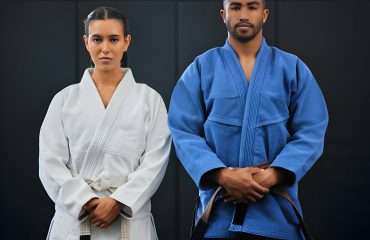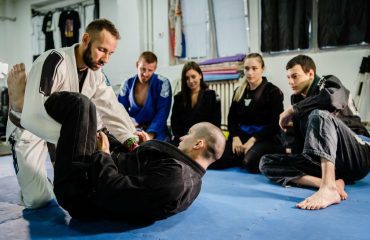
Welcome to the world of Brazilian Jiu Jitsu (BJJ), a martial art that emphasizes technique, leverage, and strategic thinking over brute strength. At NOCO Jiu Jitsu and Self Defense, we believe that mastering the various positions in BJJ is crucial for anyone looking to improve their skills and effectiveness in both training and competition. In this article, we’ll explore the different positions in BJJ, providing you with detailed insights and practical tips to enhance your understanding and execution. Whether you’re a beginner or an experienced practitioner, understanding these positions will help you navigate the complexities of jiu jitsu and elevate your game to new heights. Let’s dive in and discover how you can master these positions for more effective training.
How Many BJJ Positions Are There?
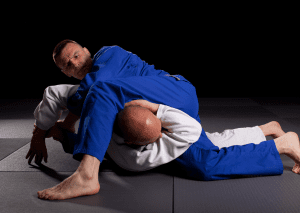
In Brazilian Jiu Jitsu (BJJ), mastering different positions is crucial for effective training and competition. Positions in BJJ can be broadly categorized into basic positions, dominant positions, and transition positions. The basic jiu jitsu positions include the closed guard, mount position, and side control. Dominant positions like the rear naked choke and back mount give you control over your opponent. Transition positions such as the half guard and turtle position serve as intermediaries during movement. These positions form the foundation of ground fighting and are essential for success in grappling arts. Mastering these positions allows practitioners to control their opponent’s body and create opportunities for submissions or advantageous positions. As you progress in your jiu jitsu journey, you’ll discover that many of these positions have variations and nuances that can be adapted to different situations.
NOCO Jiu Jitsu and Self Defense emphasize the importance of understanding these positions to improve your overall game. By familiarizing yourself with these various positions in BJJ, you can create a more effective training regimen that covers all aspects of jiu jitsu. Basic jiu jitsu movements and transitions between positions are crucial for developing a well-rounded skill set. Regular practice of these positions will help you become more comfortable in different scenarios during sparring or competition. Remember that proficiency in these positions is not just about offense, but also about recognizing and defending against them when your opponent attempts to use them.
Basic Positions
- Closed Guard
- Mount Position
- Side Control
Advanced Positions
- Rear Naked Choke
- Back Mount
Transition Positions
- Half Guard
- Turtle Position
What is the Starting Position for BJJ?
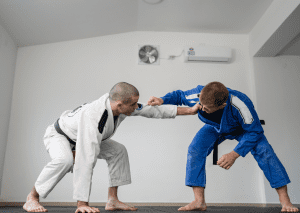
The starting position in BJJ often varies depending on the specific drill or training focus. However, a common starting position is a closed guard, where the person on the bottom wraps their legs around their opponent’s waist, controlling their posture and movement. This position is fundamental in jiu jitsu as it provides a solid foundation for both offense and defense. The closed guard is considered one of the neutral positions in BJJ, as it offers equal opportunities for both the top and bottom players. Mastering the closed guard is essential for beginners, as it teaches proper hip movement, control, and patience. As you progress, you’ll learn to use the closed guard as a launching pad for various attacks and sweeps.
Why is the Closed Guard Important in BJJ?
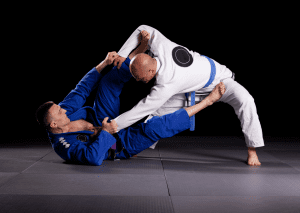
The closed guard is a fundamental position in BJJ. It allows you to control your opponent and set up various submissions and sweeps. This position is especially beneficial for beginners as it teaches control and patience. The closed guard is a versatile position that can be used both offensively and defensively, making it an essential part of any jiu jitsu practitioner’s arsenal. By maintaining a strong guard, you can frustrate your opponent’s attempts to pass and create opportunities for your own attacks. The closed guard also serves as an excellent starting point for learning more advanced guard variations and transitions.
Techniques for Closed Guard
- Basic Submissions: Arm bars, triangles, and kimuras.
- Sweeps: Scissor sweep, hip bump sweep.
These techniques form the core of closed-guard attacks and help develop essential skills for Brazilian Jiu Jitsu. As you become more comfortable with these basic moves, you can start exploring more advanced variations and combinations. Remember that the key to a successful closed guard is maintaining control of your opponent’s posture and creating angles for your attacks.
Common Mistakes to Avoid
- Opening your guard too soon.
- Not controlling your opponent’s posture.
- Failing to create space when setting up submissions or sweeps.
These mistakes can leave you vulnerable to guard passes and put you in a bad position. Focus on maintaining a tight guard and only opening when you have a clear plan of action. Developing good habits in the closed guard will pay dividends as you progress in your jiu jitsu path.
How Do You Effectively Use the Mount Position?

The mount position is one of the most dominant positions in BJJ. It provides control over your opponent and opens up numerous submission opportunities. Properly maintaining the mount can lead to effective attacks and transitions. The mount is considered a dominant position because it allows you to use your body weight to control your opponent while keeping your hands free for attacks. In an MMA fight or self-defense situation, the mount can be particularly effective for striking as well as submissions. Developing a strong mount game is essential for any well-rounded jiu jitsu practitioner.
Offensive Techniques
- Arm Bar: A powerful submission from the mount.
- Americana: A shoulder lock that can force your opponent to submit.
These submissions target the opponent’s shoulder and elbow joint, respectively, and can be highly effective when executed properly. As you become more comfortable with the mount position, you can start chaining these attacks together to increase your chances of success. Remember that patience and control are key when attacking from the mount.
Defensive Techniques
- Maintaining balance to avoid being swept.
- Keeping a low base to prevent escapes.
- Use your hips to follow your opponent’s movements and maintain the top position.
These defensive techniques are crucial for maintaining the mount and preventing your opponent from escaping or reversing the position. Practice transitioning between high and low mount to adapt to your opponent’s escape attempts. A solid defensive mount will allow you to wear down your opponent and create openings for your attacks.
What Are the Key Principles of Side Control?
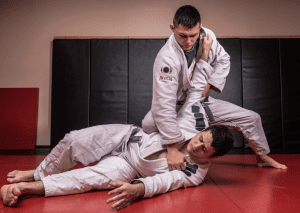
Side control is another dominant position that allows for significant control over your opponent. It involves pinning your opponent’s shoulders to the mat, limiting their movement. The side control position is a powerful pinning position that can be used to set up submissions, transitions to other dominant positions, or ground-and-pound in an MMA context. Mastering side control is essential for any jiu jitsu practitioner looking to develop a strong top game. Effective use of side control can leave your opponent breathless and struggling to defend.
Maintaining Side Control
- Pressure Passing: Applying pressure to keep your opponent flat.
- Control Position: Ensuring your opponent’s hips and shoulders are immobilized.
Use your weight distribution to prevent your opponent from creating space or recovering guard.
These principles are crucial for maintaining control and preventing your opponent from escaping. Focus on keeping your weight on your opponent’s chest and shoulders while staying mobile enough to follow their movements. Proper side control technique allows you to conserve energy while keeping your opponent defensive.
Escaping Side Control
- Hip Escape: Creating space to recover guard or transition to another position.
- Underhook Escape: Using an underhook to regain a more advantageous position.
Framing against your opponent’s neck and hips to create space and initiate escapes.
These escape techniques are essential for defending against side control and working towards a better position. Practice these escapes regularly to improve your defensive skills and prevent your opponent from maintaining dominant control. Remember that successful escapes often require a combination of technique, timing, and persistence.
How Can You Perfect the Half Guard Position?
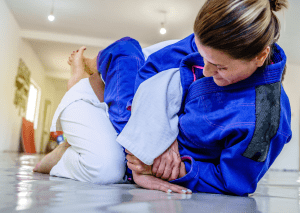
The half-guard position is a versatile position in BJJ. It can be used both defensively and offensively, making it essential to master for any serious practitioner. The half guard is often considered a transitional position between the closed guard and side control, offering opportunities for sweeps and submissions. In Brazilian Jiu Jitsu, the half-guard has evolved into a complex system with numerous variations and attacks. Developing a strong half-guard game can significantly improve your overall jiu jitsu skills and provide you with options when facing larger or more skilled opponents.
Techniques for Half-Guard
- Sweeps: Using leverage to unbalance and topple your opponent.
- Submissions: Setting up submissions like the kimura from half guard.
- Guard recovery: Transitioning back to full guard or more advantageous positions.
These techniques form the core of an effective half-guard game. As you become more comfortable with the position, you can explore more advanced variations like the deep half guard or lockdown. Remember that the half guard can be an excellent defensive tool, allowing you to slow down your opponent’s guard pass attempts and create opportunities for counterattacks.
What Makes the Turtle Position Unique in BJJ?

The turtle position is a unique defensive position in BJJ. It is used to prevent your opponent from taking your back or advancing to a more dominant position. Mastering the turtle position can help you survive and counterattack effectively. In other grappling arts like wrestling, the turtle position is often seen as a neutral or even advantageous position. However, in Brazilian Jiu Jitsu, it’s generally considered a defensive position due to the threat of back takes and submissions. Despite this, skilled practitioners can use the turtle position as a launching pad for powerful sweeps and reversals.
Advantages of Turtle Position
- Protects against backtakes.
- Sets up counterattacks and escapes.
- Allows for quick transitions to other positions.
Understanding these advantages can help you use the turtle position more effectively in your jiu jitsu game. While in the turtle, focus on protecting your neck and arms while looking for opportunities to reverse or escape. Remember that the turtle is often in a transitory position, so be prepared to move quickly to avoid giving your opponent time to set up attacks.
How Do You Execute a Rear Naked Choke from Back Mount?
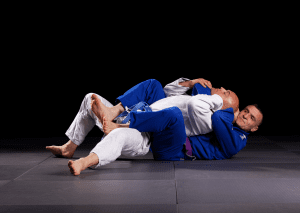
The rear naked choke is a highly effective submission from the back mount position. Securing your opponent’s back and applying the choke correctly can lead to a quick submission. The back mount is often considered the ultimate dominant position in Brazilian Jiu Jitsu, as it offers numerous attacking options while being difficult for the opponent to defend. Mastering the rear naked choke from this position is essential for any serious jiu jitsu practitioner.
Steps to Execute
- Secure the back mount by controlling your opponent’s hips and shoulders.
- Slide one arm under your opponent’s chin and lock it with the other hand.
- Squeeze to apply pressure and secure the submission.
These steps outline the basic execution of the rear naked choke. However, it’s important to note that proper technique involves more than just squeezing the neck. Focus on using your entire body to control your opponent and create the pressure needed for the submission. Remember that the threat of the rear naked choke can often force your opponent to make mistakes, opening up opportunities for other attacks.
What Are the Benefits of Guard Passing in BJJ?
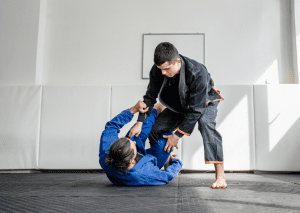
Guard passing is a critical skill in BJJ. It involves breaking through your opponent’s guard to achieve a more dominant position. Effective guard passing can set you up for submissions and control positions. In Brazilian Jiu Jitsu, the ability to pass the guard is often what separates advanced practitioners from beginners. Developing a diverse array of guard passing techniques will make you a more well-rounded and unpredictable opponent.
Techniques for Guard Passing
- Pressure Passing: Using weight and pressure to pass the guard.
- Speed Passing: Utilizing quick movements to bypass the guard.
- Misdirection Passing: Using feints and misdirection to create openings.
These different approaches to guard passing allow you to adapt to various situations and opponents. As you practice these techniques, focus on maintaining good posture and balance to prevent your opponent from sweeping or submitting you during your pass attempts. Remember that successful guard passing often involves a combination of technique, timing, and persistence.
How Can You Improve Your Knee on Belly Position?

The knee-on-belly position is a powerful control position in BJJ. It involves placing your knee on your opponent’s belly, creating pressure, and limiting their movement. This dominant position offers excellent opportunities for transitions and submissions while allowing you to maintain mobility. In Brazilian Jiu Jitsu, the knee on the belly is often used as a transitional position between side control and mount, but it can also be an extremely powerful position in its own right. Mastering this position can greatly enhance your top game and increase your offensive options.
Techniques for Knee on Belly
- Transition to Mount: Using the knee on the belly to transition to the mount position.
- Submission Setups: Set up submissions like the armbar from the knee on the belly.
- Pressure Control: Maintaining balance and pressure to control your opponent’s movements.
These techniques form the core of an effective knee-on-belly game. As you become more comfortable with this position, you’ll find that it offers a unique blend of control and mobility. Remember that the key to a successful knee on the belly is maintaining constant pressure while staying ready to react to your opponent’s escape attempts.
Why is the Spider Guard Effective for BJJ Practitioners?
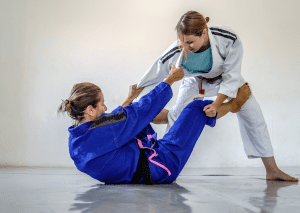
The spider guard is a dynamic and flexible guard position in BJJ. It involves using your legs to control your opponent’s arms, creating opportunities for sweeps and submissions. This versatile position is particularly effective in gi jiu jitsu, as it allows you to use your opponent’s sleeves for control. The spider guard can be an excellent tool for smaller practitioners to neutralize larger opponents, making it a valuable addition to any Brazilian Jiu Jitsu arsenal.
Techniques for Spider Guard
- Lasso Guard: Wrapping your leg around your opponent’s arm to control their movement.
- Sweeps: Utilizing the spider guard to unbalance and sweep your opponent.
- Submission Setups: Creating openings for submissions like triangles and arm bars.
These techniques showcase the versatility of the spider guard. As you practice this position, focus on maintaining tension on your opponent’s arms and using your hips to create angles for attacks. Remember that the spider guard requires active engagement and constant adjustment to be effective.
How Do You Utilize the Lasso Guard in a BJJ Match?
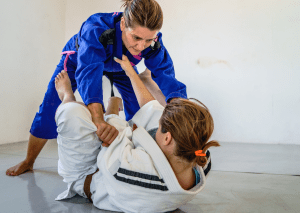
The lasso guard is an extension of the spider guard, providing additional control over your opponent’s arms and shoulders. It is particularly effective in gi BJJ. The lasso guard can be an excellent defensive tool, allowing you to control your opponent’s posture and limit their passing options. In Brazilian Jiu Jitsu, the lasso guard is often used in combination with other open guard variations to create a complex and difficult-to-pass guard system.
Techniques for Lasso Guard
- Control: Wrapping your leg around your opponent’s arm and securing their posture.
- Submissions: Setting up submissions like the triangle from the lasso guard.
- Sweeps: Using the lasso to off-balance your opponent and initiate sweeps.
These techniques demonstrate the offensive potential of the lasso guard. As you become more comfortable with this position, you’ll find that it offers numerous options for both attack and defense. Remember that maintaining proper tension and angle on your opponent’s arm is crucial for effective lasso guard control.
What Are the Best Techniques for Pressure Passing?

Pressure passing is a method of passing someone’s guard that relies on applying constant pressure to your opponent, making it difficult for them to move or escape. This approach is particularly effective against flexible or defensive guard players. In Brazilian Jiu Jitsu, pressure passing is often contrasted with movement-based passing, and both styles have their advantages. Developing a strong pressure passing game can make you a formidable opponent, especially in gi jiu jitsu where grips play a significant role.
Techniques for Pressure Passing
- Crossface and Underhook: Use these grips to control and pass your opponent’s guard.
- Leg Drag: Dragging your opponent’s legs to the side to create an opening for a pass.
- Stack Pass: Using your weight to fold your opponent and pass their guard.
These techniques form the foundation of effective pressure passing. As you practice these passes, focus on maintaining constant pressure and denying your opponent space to recover their guard. Remember that successful pressure passing often involves patience and persistence, gradually wearing down your opponent’s defenses.
How Do You Execute an Arm Bar from Various Positions?
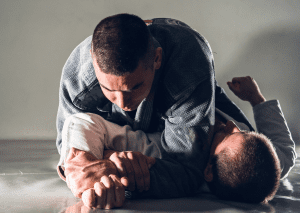
The arm bar is a versatile submission that can be executed from multiple positions, including the mount, guard, and side control. This technique targets the elbow joint and is one of the most fundamental submissions in Brazilian Jiu Jitsu. Mastering the armbar from different positions can significantly enhance your offensive capabilities in jiu jitsu. In an MMA fight or self-defense situation, the arm bar can be a highly effective technique for quickly neutralizing an opponent.
Techniques for Arm Bar
- Mount Position: Transitioning from mount to arm bar.
- Guard Position: Setting up the arm bar from the guard.
- Side Control: Executing the armbar from side control.
These variations showcase the versatility of the arm bar technique. As you practice, focus on maintaining control of your opponent’s body while isolating the arm. Remember that proper angle and hip placement are crucial for a successful arm bar, regardless of the starting position. Developing a smooth transition into the arm bar from various positions will make you a more dangerous and unpredictable opponent.
What Are the Essential Defensive Positions in BJJ?
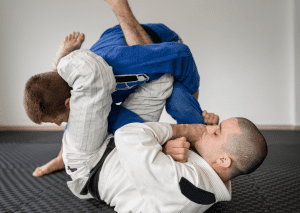
Defensive positions in BJJ are crucial for survival and counterattacking. Understanding and mastering these positions can significantly enhance your defensive game. In Brazilian Jiu Jitsu, a strong defense is often the foundation for effective offense. Many of the basic jiu jitsu positions can be used defensively, depending on the context and your opponent’s actions.
Key Defensive Positions
- Turtle Position: Protecting yourself and setting up escapes.
- Half Guard: Defending and transitioning from half guard.
- Closed Guard: Using the guard to control and neutralize your opponent.
These positions form the core of a solid defensive strategy in BJJ. As you develop your defensive skills, focus on maintaining good posture, protecting vulnerable areas, and looking for opportunities to improve your position. Remember that effective defense often involves a combination of technique, timing, and mental toughness.
How Can You Incorporate Versatile Positions into Your Training?
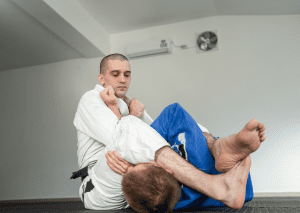
Incorporating versatile positions into your training can improve your adaptability and effectiveness in BJJ. Positions like the spider guard and lasso guard offer flexibility and control. In Brazilian Jiu Jitsu, being comfortable in a wide range of positions is crucial for success in both competition and self-defense scenarios. Training in various positions will help you become a more well-rounded practitioner and better prepared for the unpredictable nature of grappling.
Benefits of Versatile Positions
- Adaptability: Being able to transition smoothly between different positions.
- Control: Maintaining control over your opponent in various scenarios.
- Offensive Opportunities: Creating more chances for submissions and sweeps.
Join Our Community and Improve Your Skills
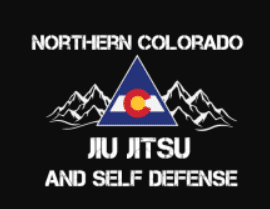
At NOCO Jiu Jitsu and Self Defense, we are committed to helping you master the various positions in BJJ. Our experienced instructors provide personalized training to ensure you achieve your goals. Join our community and take your BJJ skills to the next level. We offer comprehensive training in all aspects of Brazilian Jiu Jitsu, from basic jiu jitsu movements to advanced techniques. Our curriculum covers many positions and strategies to help you become a well-rounded practitioner.
Mastering different positions in BJJ is essential for effective training and competition. By understanding and practicing positions like the closed guard, mount position, and side control, you can enhance your skills and become a more versatile practitioner. These important positions form the backbone of Brazilian Jiu Jitsu and are crucial for success in both sport jiu jitsu and self-defense scenarios. Remember that proficiency in these positions comes with consistent practice and dedication to your training. As you continue your jiu jitsu journey, strive to become comfortable in both offensive and defensive roles across a wide range of positions. Join us at NOCO Jiu Jitsu and Self Defense to continue your path and achieve your BJJ goals.
Frequently Asked Questions: How Can You Master Different Positions in BJJ for Effective Training?
Q: What are the main categories of positions in Brazilian Jiu Jitsu?
A: The main categories of positions in BJJ are basic positions, dominant positions, and transition positions.
Q: Why is the closed guard considered an important position in BJJ?
A: The closed guard is important because it allows you to control your opponent, set up submissions and sweeps, and is beneficial for beginners to learn control and patience.
Q: What are some common mistakes to avoid when in the closed guard?
A: Common mistakes include opening your guard too soon, not controlling your opponent’s posture, and failing to create space when setting up submissions or sweeps.
Q: How is the mount position effectively used in BJJ?
A: The mount position is used to control the opponent, open up submission opportunities, and can be particularly effective for striking in MMA or self-defense situations.
Q: What are the key principles of maintaining side control?
A: Key principles of maintaining side control include applying pressure to keep your opponent flat, ensuring your opponent’s hips and shoulders are immobilized, and using your weight distribution effectively.
Q: How can the half-guard position be used both offensively and defensively?
A: The half-guard can be used defensively to slow down guard passes and offensively to set up sweeps and submissions, making it a versatile position in BJJ.
Q: What makes the turtle position unique in BJJ compared to other grappling arts?
A: In BJJ, the turtle position is generally considered a defensive position due to the threat of back takes and submissions, unlike in some other grappling arts where it may be seen as neutral or advantageous.
Q: What are the steps to execute a rear naked choke from a back mount?
A: The steps include securing the back mount by controlling your opponent’s hips and shoulders, sliding one arm under your opponent’s chin and locking it with the other hand, and squeezing to apply pressure and secure the submission.
Q: Why is guard passing considered a critical skill in BJJ?
A: Guard passing is critical because it allows you to break through your opponent’s guard to achieve a more dominant position, setting you up for submissions and control positions.
Q: How can incorporating versatile positions improve your BJJ training?
A: Incorporating versatile positions can improve your adaptability, and control over your opponent in various scenarios, and create more offensive opportunities, making you a more well-rounded practitioner.

